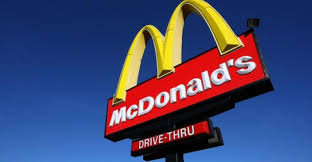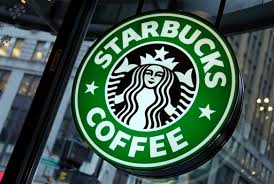Predictably Misbehaving
Lecture 1: Introduction to Behavioral Economics
Joshua Foster at UW-Oshkosh

What is Behavioral Economics?
A study of the joint influence of psychological and economic factors on behavior.
Behavioral economics is a modification of mainstream economics.
Mainstream economics is called Neoclassical economics.
Like neoclassical economics, behavioral:
- Uses mathematical models to predict choices.
- Assumes that individuals have goals (which provide utility).
- Explores how individual behavior varies across economic environments.
- Is concerned with welfare consequences.
How is behavioral economics different from Neoclassical economics?
Unlike neoclassical economics, behavioral:
- Cares a lot about what actually motivates people.
- Relies on experiments, surveys, psychology and neurology.
- Emphasizes preferences, beliefs and cognition together.
Traditional Economic Assumptions
We will critically examine the following assumptions:
- People are purely self-interested.
- People perfectly understand the laws of probability.
- People have correct beliefs about all information.
- People have preferences over final outcomes.
- People have well-defined and stable preferences.
- People discount tradeoffs over time optimally.
These assumptions describe how people should behave.
The Survey
The Survey
For your homework you will fill out a survey asking:
- A few things about you.
- Your impressions of the world.
- How you would behave in certain situations.
There are actually two versions of the survey.
- The two versions contained slightly different questions.
- The two surveys were randomly assigned, so that it was random which version each of you received.
The Survey
Economics experiments always contain two features.
Randomization:
Random assignment of subjects ensures that there are no inherent differences between the groups answering the different questions. The differences in behavior can be attributed solely to the different questions.
Experimental Manipulation:
To learn what difference something makes in people's behavior, we vary that one thing between subjects.
The Survey
Ideally, we would observe people in their natural environments.
- Occasionally this is possible.
- However, the real world can be messy to study.
- We cannot always randomize or manipulate situations.
- In these cases, we run controlled experiments.
As a first look at experimentation, today let's
- Motivate individual behavior theoretically.
- Look at a natural experiment.
- Consider our surveys from the homework.
Modeling Humans
Economists break down individual behavior into:
- Utility: What makes people happy in the moment.
- How people react towards risk.
- How people value the future.
- Beliefs: What one believes about their environment.
- How new information change people's beliefs.
- How people view themselves and others.
- Optimization: How utility+beliefs produce decisions.
- And their sensitivity to other factors.
Utility
Losses and Risk-taking
Facts about horserace betting:
- Many races on any given day.
- Payouts in each race are balanced by the bets made.
- Betting on "long shots" increases toward the end of the day.
- Spikes especially in the very last race.
- Betting on the favorite to show in the last race is profitable.
Losses and Risk-taking
Possible explanation: bettors take risks to "get even".
- That is, to finish the day without losses.
It is possible that:
- Toward the end of the day, most bettors have lost money.
- The only reasonable way to get back even is to spend a little more and make a bet with a potentially high payoff.
"The best way to play a show parlay is to set a reasonable goal of how much you want to win and to keep betting the show parlay until you get there. You then start over. If you don't make it to your goal on the first try, you have only lost $10.
"Show parlays are affordable, fun and can be lucrative. They give you action on every race at a very low cost and the closer you get to your monetary goal, the more the tension and excitement builds." - predictem.com
Survey Questions
| "Would you choose to gain 500 dollars with a 100% chance or gain 1000 dollars with a 50% chance?" | Would you choose to lose 500 dollars with 100% chance or lose 1000 dollars with a 50% chance? |
| 76% preferred to gain 500 with 100% chance. (Risk-averse behavior) | 28% preferred to lose 500 with 100% chance. (Risk-loving behavior) |
When have you tried taking big risks to avoid losses?
This exemplifies Reference-dependent Preferences.
- People evaluate relative, not absolute outcomes.
- Relative outcomes come from a reference point.
- People hate falling short of their reference point.
- This motivates them to take risks to reach it.
- Natural reference point: finishing where you started.
- Individuals more willing to gamble to not lose.
Decisions Over Time
Strange Super Bowl Bets
There are many odd bets bookies will take:
- Someone will streak on the field (4:1).
- Someone catches fire during the halftime show (25:1).
- Primary Color in Miley Cyrus’ hair in her tailgate show (various).
(Not Super Bowl related, but) An odd bet you can make:
- You (a person on a diet) will reach your desired weight.
- In principle, you have complete control over the outcome...
- Yet 82% of these bettors lose.
Internal Conflicts
Two possible explanations:
- Bettors think they can lose weight, try to make money.
- They make the bet to incentivize them to lose weight.
In either case, they don't typically carry it through.
Consider the survey:
| 50% of students were asked how much they should exercise. | 50% of students were asked how much they do exercise. |
| On average: 17 times/month | On average: 12 times/month |
We sometimes fail to do what we think we should.
Other question on the survey:
| Suppose I could give you 100 dollars in cash right now, or $X$ in cash in two weeks. What is the smallest $X$ for which you would be indifferent between the two options? | Suppose I could give you 100 dollars in cash in eight weeks, or $X$ in cash in ten weeks. What is the smallest $X$ for which you would be indifferent between the two options? |
| $\overline{X}=178$ | $\overline{X}=122$ |
We are relatively patient with far-off tradeoffs.
Credit
United States in 2018:
- $\sim$1.1 trillion credit cards in circulation.
- Average debt per household: 7800 dollars.
- Average debt-weighted interest rate: 13%
($\approx$ 800/year)
About 12 million Americans rely on payday loans.
- A short-term loan that collects a portion (or all) of the borrower's paycheck.
- More payday stores than McDonald's and Starbucks combined.
 | > |  | + |  |
- Average loan of 350 dollars includes 60 dollars in fees, so receives only 290 dollars.
Two major issues with decisions involving time:
- There is a prominent conflict between short-run desires and long-run goals.
- People don't always predict their own future utility and behavior very well.
We will explore these issues in great detail in many varied contexts.
Probability Judgments
Mistakes in Objective Probability Judgments
Survey question:
Suppose $\frac{1}{100}$ people have COVID-19. We have a test for the virus that is 99% accurate. This means that if a person has COVID-19, the test returns a positive result with 99% probability, and if a person does not have COVID-19, it returns a negative result with 99% probability. If a person's test comes back positive, what is the probability that she has COVID-19?
The majority of students (90%+) answered 99%. Possible logic:
- Positive person will probably receive a positive result (99% chance).
- So if they tested positive, she is likely to have COVID-19 (also 99% chance).
Correct answer: 50% ($\sim$1% answers correctly)
Mistake made:
- Ignoring the base rate of COVID-19 in the population.
- Very few people have COVID-19.
- So, a positive test is very likely to be a false positive.
What is often a natural and correct way of reasoning will mislead us with objective probabilities.
Survey question:
| What do you think is the probability that upon finishing your studies you will land a job with a starting salary over 45,000 dollars? | If I picked a random student out of this class, what would you say the probability is that upon finishing their studies they will land a job with a starting salary over 45,000 dollars? |
| $\overline{X}=68$% | $\overline{X}=42$% |
A bias toward oneself revealed.
- People are often overly optimistic about their prospects relative to others.
- These results here suggest over-confidence.
Other examples of overconfidence:
- 93% of US students believe they're above-average drivers.
- 84% of the French believe they're above-average lovers.
- 68% of professors believe they're in the top 25% of teachers.
In Conclusion
I encourage you to observe your friends, family, strangers, etc. carefully while taking this course.
- Some of them are bound to behave in ways we're discussing.
- You'll often see puzzles for which you might want to think about another behavioral economic theory.
Finally, think about how we can work to improve outcomes.